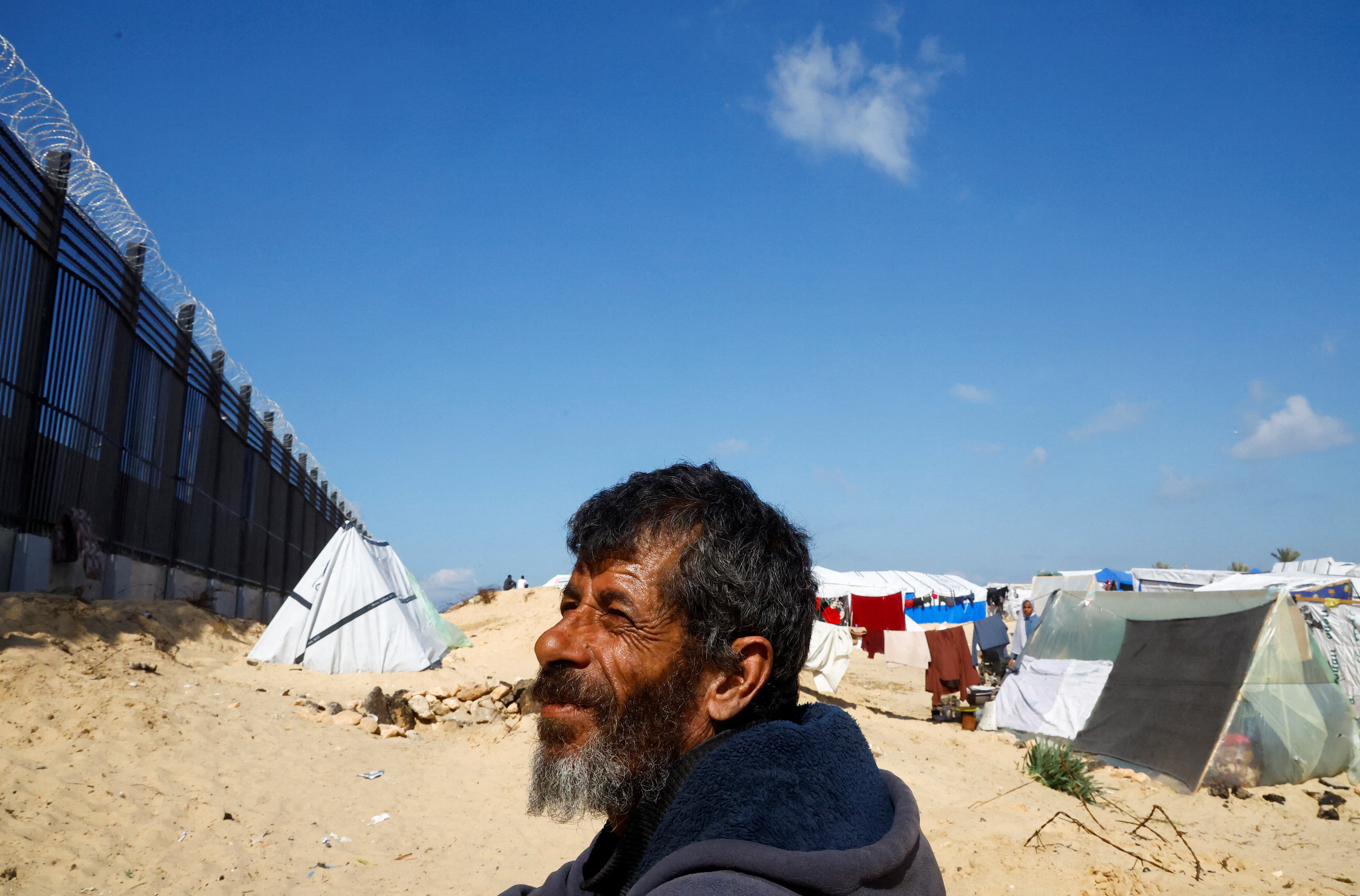Desperate Palestinians in Gaza’s Rafah fear coming Israeli assault

By Mohammad Salem and Nidal al-Mughrabi
RAFAH, Gaza Strip/DOHA (Reuters) -The Abu Mustafa family’s tent is hard against the high concrete and metal fence separating Gaza from Egypt in Rafah, the last relatively safe place in an enclave devastated by Israel’s military offensive, but one that may now also come under attack.
The family is among more than a million Palestinians now crammed into the area around Rafah and fearing they have nowhere left to flee inside a tiny strip largely reduced to rubble and where fighting still rages.
“Every day, we’re on the run. Being displaced is tough because I have two daughters with disabilities. I can’t carry them around. I don’t have a car or a cart,” said Laila Abu Mustafa.
“If there will be more displacement, I’m not moving,” she said.
Israeli Prime Minister Benjamin Netanyahu has ordered an evacuation plan for the civilians who crowd Rafah, camping in streets and empty lots, on the beach and like the Abu Mustafa family on the sandy strip along the Egyptian border.
In a call, U.S. President Joe Biden told Netanyahu that Israel should not proceed with a military operation in Rafah without a plan to ensure the safety of people sheltering there, the White House said.
The call came days after Biden said Israel’s response in Gaza was “over the top”.
A senior Biden administration official said negotiators working on a deal to release the remaining hostages held by Hamas had made “real progress” over the last few weeks.
There were still some “significant” gaps to close, the official said, but added: “It’s pretty much there.”
Before previous assaults on Gaza cities, Israel’s military has ordered civilians to leave without preparing any specific evacuation plan. Aid agencies say an assault on Rafah would be catastrophic.
The war began on Oct. 7 when Hamas stormed the border fence with Israel, sending in fighters who killed 1,200 people, mostly civilians, and seized about 250 hostages, according to Israeli tallies.
Four months later, Gaza is in ruins. Under a massive daily bombardment, Israeli forces have overrun most of the enclave, smashing houses, public buildings and infrastructure with air raids, artillery fire and controlled detonations.
Palestinian health authorities say more than 28,000 people have been killed. More than 85% of Gazans are homeless. A U.N. survey found that nearly one in 10 children under five are acutely malnourished.
Efforts to finalise a deal on a ceasefire have so far failed to bring an agreement. Last week Israel rejected a Hamas proposal, saying it would not stop fighting while the group retained brigades that Israel says are hiding in Rafah.
Egyptian security sources said more high-level talks were planned for Tuesday with senior officials from Qatar and the United States to attend, as well as Israeli and Palestinian delegations.
Israeli air raids have started targeting Rafah over recent days.
On Sunday, Hamas said Israeli air raids in the Gaza Strip over the previous four days had killed two hostages and injured eight others.
The group said any Israeli assault on Rafah would “blow up” the discussions for a deal to free the remaining hostages.
EVACUATION PLAN FOR CIVILIANS
In an interview aired on U.S. network ABC on Sunday, Netanyahu reiterated that Israeli forces would assault Rafah but were preparing “a detailed plan” for where civilians there could go.
“We’re going to do it. We’re going to get the remaining Hamas terrorist battalions in Rafah,” he said, adding: “We’re going to do it while providing safe passage for the civilian population”.
Netanyahu cast doubt on the accuracy of the Palestinian death toll, describing the figures produced by health authorities in Hamas-run Gaza as “Hamas statistics”.
“It’s only been one civilian that’s been killed for one Hamas terrorist in Gaza,” he said.
“We’ve killed or wounded around 20,000 Hamas terrorists; out of that, 12,000 fighters” he said without explaining further.
Palestinian health authorities say around 70% of people killed in Gaza are women or children under 18. The Israeli military said in a briefing in December that they thought roughly two civilians had been killed in Gaza for each dead Hamas combatant.
The World Health Organization has described the Palestinian Health Ministry system for reporting casualties as “very good” and U.N. agencies regularly cite its death toll figures.
Against the border fence, topped with barbed wire, the Abu Mustafa family hangs laundry between tents. They cook what little food they can gather in tin cans over a fire in the sand.
Fear of an assault on Rafah is the constant subject of every conversation in the crammed city, said Mariam, who fled her home in Gaza City early in the war with her three children aged 5, 7 and 9.
“I can’t describe how we feel. There is turmoil in my head. My children keep asking me when Israel will invade Rafah and where we will go and if we will die. And I don’t have the answers,” she said.
(Reporting by Mohammad Salem in Rafah, Nidal al-Mughrabi in Doha, Dan Williams in Jerusalem, Ahmed Mohamed Hassan in Cairo and Leah Douglas and Jasper WardWriting by Angus McDowall and Giles ElgoodEditing by Sharon Singleton, Frances Kerry and Hugh Lawson)